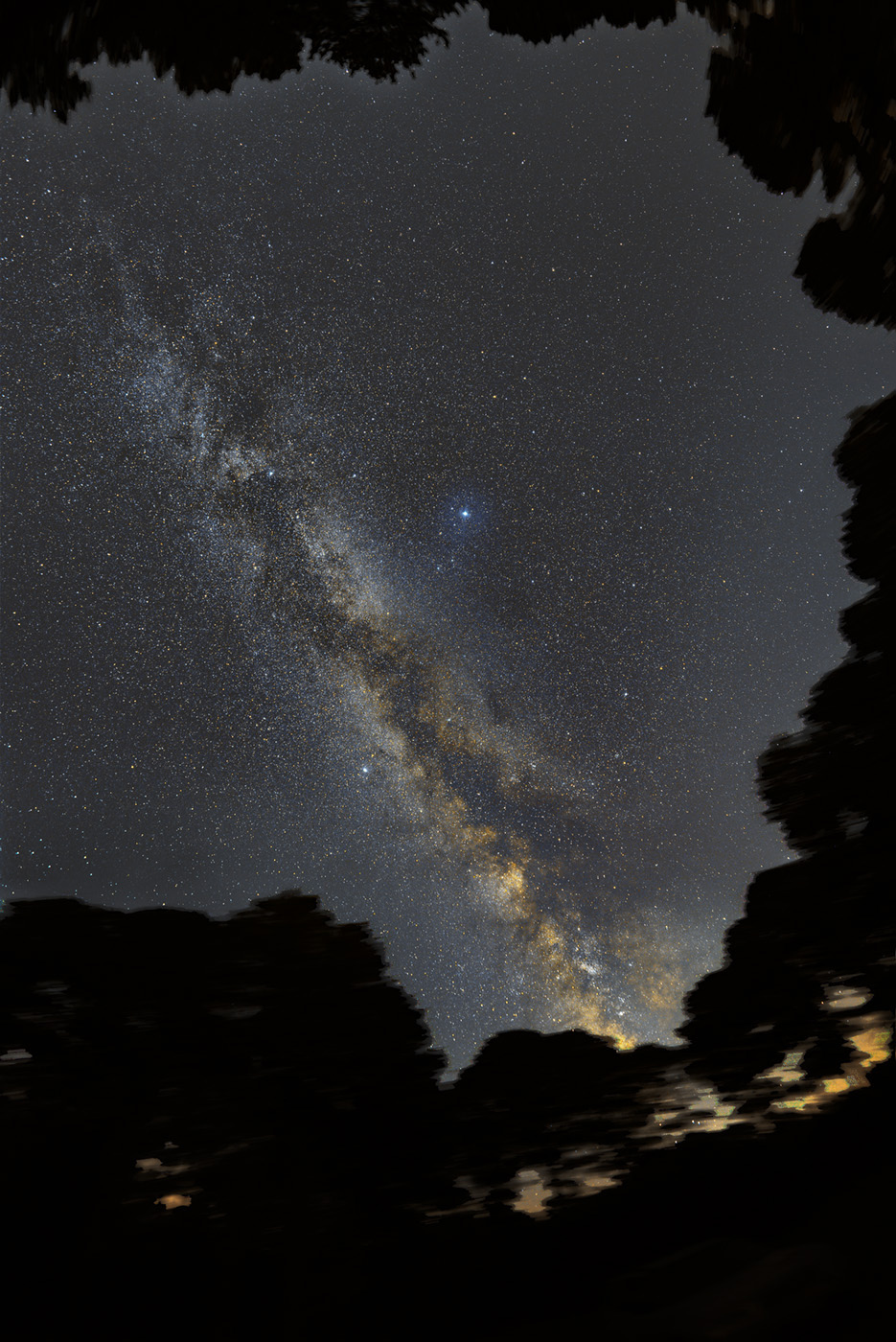The Starry Night, 252 :: home :: |
The 2023 Perseids
Click any image to see it right. This is a stack of dew-filtered fog-enveloped skyscapes. I could just pull a few stars out of each frame through very aggressive parms in Adobe Raw. I took the mean of five consecutive frames in Photoshop to remove the resulting noise. It reminds me of a J.M.W. Turner nocturne or something a Hudson River student would be proud to turn out between dusk and dawn. There's plenty of material to work with if I ever want to try variations, and I do.
Before the sky fogged over and dew began condensing, I collected these 14, 20-second exposures. I neglected to turn on the tracker, but Pixinsight aligned nicely and throught a 180-degree fisheye lens, 20-seconds worth of trailing is no disaster.
But there's just no substitute for tracking. The next night, I snagged 30, 25-second exposures and Pixinsight aligned them into this.
The images that follow are all crops from 12mm Rokinon fisheye frames from the night of the peak, 30-seconds at F2.8, ISO 1600, except for one that's uncropped. I tried half a dozen compositions during the night, and when more than one Perseid appeared in one, I layered the frames (same parms) while registering the starfield to include them. I saw 20-ish meteors while only occasionally paying attention to the sky (ambling in the quiet by the lakeside is worth doing, too). None were brilliant, light-up-the-night rippers, but a couple rivalled Jupiter and a few more were up there with Vega.
The first two Perseids of the night, through thinning clouds. After these drifted away and evaporated, the sky stayed crystal clear until dawn.
I waited till just after the forecast peak at 5:00 AM when changing breezes carried the faint aroma of a coal-burning stove or furnace. Roosters crowed. By then the earthlit moon had risen and climbed through a layer of dark fog over the lake. I'd been up all night trying to take a large part of it in. It was a very Glade Spring, 1970's sort of moment. The sky turned pale, or seemed to. It's possible that I was just tired and looking for a reason to call it a night.
Reviewing the take, something needs to be worked out about this lens. It does not focus beyond infinity, so what you get at the infinity stop is what you have. One side of the field, about a quarter or a little more, is badly defocused at that setting. Maybe just sometimes. Look at the full-sky Milky Ways above; if it were always that good, I'd probably not even be mentioning this. And the fuzz sharpens up if I focus closer, which ruins the majority of the field. I infer that one side of the lens is optically too close to the sensor. It is probably an internal alignment issue, and I am unable to shim the mount owing to Canon's tight tolerances. I can live with it by being aware of which side is regularly compromised (it's the side away from the camera grip) and compose accordingly. Or I can (probably) stop down and make up the difference with ISO, especially when I mean to stack widefield photos. Maybe it's really a 12mm F5.6 lens when used under the stars. ISO 1600, F2.8, 30s is about the sky-fog limit around here. I'll try higher ISOs and smaller apertures and see what it takes to sharpen this lens up from wall to wall.
Things are greatly improved by F5.6, and with modern sensors, I can imagine doing sharp starscapes to a reasonable depth at F8. Hide one quarter to one third of the left side of the frame in a dark field below the horizon, and the 12mm Rokinon can be used at any aperture. F2.8 and to a lesser extent F4 require some awareness of what's near the left edge of the frame. F5.6 will probably be my go-to aperture for just about any maximally broad starscape. While chatting via Messenger about fisheyes that work well and fisheyes that work better, Facebook served me an ad for a TTartisans 7.5mm F2.0 in a Canon RF mount. Interesting! In at least two ways. I had no idea such a thing existed. It turns out to be reasonably well reviewed and inexpensive. Some online sample images suggest that its edges are at least as good as the Rokinon's bad side, so let's take a chance. It will doubtless have issues, especially at full aperture, and its image circle is "only" 150 degrees, but B&H had an open box example that will be here Saturday or Monday. 2023/08/19. I agree with practically every other reviewer at least this far: holy shit! This thing is way better than I expected! More details on the next Slowblog page.
:: top ::
|
© 2023, David Cortner






